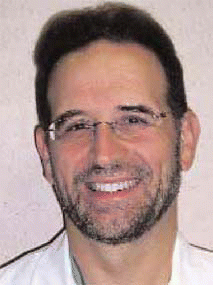Seth M. Pransky, MD, is Director of Pediatric Otolaryngology at Rady Children’s Hospital in San Diego. He earned his medical degree from Washington University in St. Louis. His postgraduate training included a residency in otolaryngology from the University of Pennsylvania and a fellowship in pediatric otolaryngology at Children’s Hospital Medical Center in Washington, DC. Dr. Pransky is on the speaker’s bureau for ArthroCare and receives grant funds for research.
Explore This Issue
November 2007Seth M. Pransky, MD, shares his perspective regarding the appropriate indications for surgical intervention for children with chronic sinusitis.
When a pediatric patient presents with a diagnosis of chronic sinusitis and rhinitis, my modus operandi is to assess the patient, review the history, and provide medical treatment as indicated. However, patients not responding to aggressive medical management treatments may require further evaluation, and some may be candidates for surgical intervention.
Assessment follows the “five A’s” (see Table 1) to identify the potential cause or causes of chronic sinusitis. Allergies should be identified, and avoided and/or treated with antihistamines and intranasal corticosteroid sprays. The adenoids should be evaluated for hypertrophy. This can contribute to rhinosinusitis through mechanical obstruction; and chronic adenoiditis may also be a source of recurrent bacterial infection.3 Acid reflux should also be evaluated as a potential cause. If the patient history is suggestive of GERD, then an empiric trial of anti-reflux medications (H2 blocker or proton-pump inhibitor) should be considered.4,5 Evaluation for other underlying medical disorders should also be performed.
The small subset of patients that does not respond to maximum medical therapy may be considered for surgical intervention. Usually the first step in medical management is to carry out an adenoidectomy. However, if symptoms persist after an adenoidectomy, inferior turbinate reduction should be considered. While still controversial, inferior turbinectomy has shown positive results in clinical studies.6–10 Indications for surgery include the persistence of symptoms of nasal obstruction—with or without nasal discharge—despite ongoing medical therapy and the absence of evidence suggesting an alternate diagnosis. A CT scan should be performed to detect evidence of respiratory infection and to help define anatomy. In my experience, turbinate anatomy affects only a small number of children with chronic sinusitis. Therefore, patients to be considered for turbinate reduction should be carefully selected.
Turbinate Reduction Procedure
In my practice, I currently use the coblation (or “cold ablation”) radiofrequency technique for turbinate reduction in children. The coblation probe is inserted into the anterior and medial portions of the inferior turbinate and one path is made with three “lesions” generated from posterior to anterior. Each lesion vaporizes tissue within 0.5 mm of the probe. For most children, the procedure is performed in the operating room under general anesthesia. Tissues immediately adjacent to the probe are heated to 40°C to 70°C. This lower-temperature technique allows for removal of target tissue without damage to collateral structures, thereby preserving anatomy and leaving facial growth unaffected. The procedure is quick, requiring about 15 minutes to perform. For most younger children (under 10 years of age), the procedure is performed in the operating room.

Leave a Reply